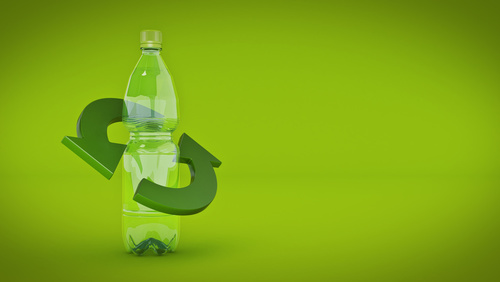Plastic is one of the most common and most popular packaging materials out there today. It is used in almost every industry right from packaging Machines (using plastic pallets and plastic beans) to packaging food (in forms of cups, trays and films). It is used in making bags, boxes, films, trays and many other such items for consumer and businesses alike. Plastic is literally spread to every business. However, at the same time, plastic’s popularity has made it a part of the huge environmental problem that plastic has come to represent.
Plastic is a non-degradable material which goes to landfills after it is used and it takes many years before it decomposes. Because of this reason, it has become one of the major sources of pollution in land and water bodies. While the research is on, currently there is no practical alternative to plastic. It seems that the use of plastic will continue to grow. Hence it is important that plastic is recycled to reduce the impact of plastic waste on environment. The recycling of plastic is already on its way to become a viable and established business model.
The process of converting waste and scrap plastic into something useful (usually pellets) is called as ‘plastic recycling’. It involves multiple steps right from the collection (usually the toughest part) to the melting and moulding (into new desired form). Here is the step by step process of recycling plastic.
- Collection: This is usually the most challenging part. Plastic is available and used in many forms such as cups, jars, films, bags, bottles, containers and many others. Many people mix their plastic waste with other waste and it usually becomes difficult to segregate and this aggregate waste goes to the landfill. There are efforts to make people environmentally conscious and to help them segregate their plastic waste so it can be collected and recycled. Some businesses are venturing into plastic collection by incentivizing separation of plastic waste and its deposit with the plastic collectors. The waste and scrap thus collected is sent to the collection yard from where it then goes to the processing plant.
- Sorting: All kinds of plastic cannot be recycled together. It must be separated according to its grade and raisin content. Different kinds of plastics have different melting points. The different polymer types that make different kinds of plastics, if processed together will result in a very weak plastic that cannot be used commercially. The separation can be done by machines based on the physical properties of various kinds of plastics. In some cases, an industrial solvent is used that dissolves only a certain grade of plastic leaving the rest behind. Some of the most common types of plastics that can be recycled are
- Polyethylene Terephthalate: This kind of plastic is tough. It has excellent clarity. It is strong and has excellent barrier to moisture and Gas.
- High Density Polyethylene: This kind of plastic is known for its excellent stiffness, resistance to moisture and impermeability to gas. It is used in making water, juice, milk bottles, retail bags and thrash bags for households and industries.
- Polyvinyl Chloride: More commonly known as PVC, this kind of plastic is tough strong and can be bended easily. It is used in making PVC pipes and cling films.
- Low Density Polyethylene: This is the most common type of plastic that is recycled. It is very easy to process. It is Strong flexible and resistant to moisture and easy to seal. It is used in making frozen food bags, flexible container lids, freezable bottles etc.
Sorting is a tricky and labour intensive business. Moreover, it is difficult to predict the amount of recyclable plastic that can be separated from the total plastic collected.
- Shredding: The collected and sorted plastic is then shredded into small tiny pieces which are easy to pass through machines and easy to transport. After shredding there may be further sorting based on the grade of plastic that may have been missed in previous sorting process.
- Cleaning: All the contamination such as dust, dirt and residues of other product etc must be removed from plastic before it is melted. The plastic is cleaned using a series of air blowers, water jets and other solvents to remove any contamination that my impact the quality of processed plastic. The shredded plastic is easier to clean as compared to the large chunks of plastic. The clean plastic is allowed to dry in order to remove any moisture content before going for melting.
- Melting and moulding: The clean, shredded plastic of same grade is then melted and moulded into the desired shape. Most commonly the recycled plastic is moulded into small pellets called ‘nurdles’, which are then commercially sold. These pellets can then be used by moulders into whatever shape the buyer wants to, just like regular virgin plastic.
Plastic recycling depends a lot on users of plastic who are environmentally conscious. The first and important step of separating the plastic from other waste, collecting it and sending it to recyclers is the most difficult step to achieve socially. However, with rising consciousness about environment sustainability and increasing cost of crude oil, which is the source of virgin plastic, the business of recycling plastic has become commercially viable. It is set to only grow in future as oil gets more expensive and plastic keeps on finding new applications.

